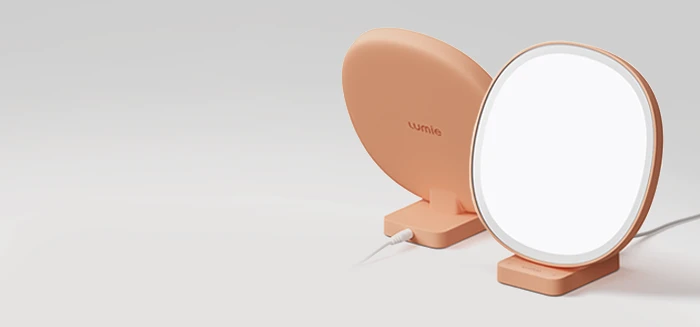Women's Health: Bright Light Therapy for Perinatal Depression

Despite these statistics, there’s still a lot to be done in terms of raising awareness about mental health problems women experience ante- and post-partum. When talking about keeping well in pregnancy, most of the guides include information about what to eat, what supplements to take, what not to do (smoking, drinking alcohol) etc. They advise you on how to cope with morning sickness, tiredness, headaches, acid reflux and swollen ankles, yet little to no advice or support is available to expectant women or young mothers who suffer form mental health issues. Most women who present with depressive symptoms are not screened and do not receive adequate treatment. During the perinatal period women are expected to be calm, content and fulfilled, yet it in fact it is “a time of substantial vulnerability to affective illness due to the rapid fluctuation in hormone levels during pregnancy, and more dramatically, during the postpartum period. Many mothers feel guilty or fearful of their feelings during a time in which they assume they should be happy, thus refusing to acknowledge depressive symptoms”. Furthermore, aware of the harmful side effects of antidepressants affecting infants (including persistent pulmonary hypertension, cardiac abnormalities, and neonatal withdrawal and toxicity), mothers-to-be and new mums typically steer away from medication. Often unable to commit to or afford psychotherapy or other alternative therapies, many pregnant women and young mothers end up ‘suffering in silence’.
In search for an affordable and handy alternative to antidepressants, scientists have turned to bright light therapy. Given the proven efficacy of bright light on seasonal and other types of depression as well as its low side effect profile compared to pharmacotherapy, bright light therapy indeed presents itself as an effective and well-tolerated non-pharmacologic option for women with perinatal depression. To date there’s been a handful of small but promising pilot studies into the effect of bright light therapy in treating perinatal depression. So far, the application of bright light therapy in the treatment of perinatal depression, although limited, has overall shown positive results. Bright light therapy used for 3 to 6 weeks has shown to improve depression and appeared to be a safe therapy for females during pregnancy and postpartum Due to the limited number of studies, all authors who published research on the efficacy of bright light therapy in treating ante- and post-partum depression expressed a clear need for large randomized controlled trials one of which, ‘Life-ON project’ is currently underway.
Having kicked off in the autumn of 2016, ‘Life-ON project’ is a 3-year longitudinal, observational, multicentre study of about 500 women who will have been followed-up from early pregnancy (10–15 gestational week) until 12 months after delivery. “The main aims of the project are to explore the field of sleep in search of possible causative or predictive markers of perinatal depression and to test the safety and efficacy of bright light treatment in perinatal depression. Sleep and depression are strongly related to each other with a solid reciprocal causal connection. There are several lines of evidence that suggest a pivotal role of perinatal-related sleep changes in the genesis of depression during this period.”
Building on the research into ante- and post-partum depression as well as circadian rhythm disruptions, the theory behind the ‘Life-ON project’ is that the sleep structure during pregnancy contains essential information for the early identification of women who will develop perinatal depression, suggesting that using bright light therapy - an easy, home-based, self-administered and safe treatment option – may help prevent the onset of perinatal depression in women during the early stages of pregnancy as well as treat an already established depression during pregnancy and the puerperium.
Sources:
Babette B., Astrid M. et al, Bright light therapy in pregnant women with major depressive disorder: study protocol for a randomized, double-blind, controlled clinical trial, BMC Psychiatry. 2016; 16: 381.
Howard, R., Trevillion, A, Bick, B, Byford, O., Sands, D., The accuracy of the Whooley questions and the Edinburgh Postnatal Depression Scale in identifying depression and other mental disorders in early pregnancy. British Journal of Psychiatry, 2018
Nillni Y, Mehralizade A, Mayer L, Milanovic S. Treatment of depression, anxiety, and trauma-related disorders during the perinatal period: A systematic review.; Clin Psychol Rev. 2018 Dec;66:136-148.
O'Hara MW, Swain AM. Rates and risk of postpartum depression: a meta‐analysis. International Review of Psychiatry 1996;8:37–54
Centers for Disease Control and Prevention Prevalence of self‐reported postpartum depressive symptoms—17 states, 2004–2005. Morbidity and Mortality Weekly Report 2008;57:361–6
Wirz-Justice A, Bader A, Frisch U, Stieglitz RD, Alder J, Bitzer J, et al. A randomized, double-blind, placebo-controlled study of light therapy for antepartum depression. J Clin Psychiatry. 2011;72:986–93. 26.
Crowley SK, Youngstedt SD. Efficacy of light therapy for perinatal depression: a review. J Physiol Anthropol. 2012;31:15.
Maria Muzik, MD MS corresponding author and Stefana Borovska, Perinatal depression: implications for child mental health BS Ment Health Fam Med. 2010 Dec; 7(4): 239–247
Deepika Goyal, Caryl Gay, Rosamar Torres, Kathryn Lee. Shortening day length: a potential risk factor for perinatal depression. Journal of Behavioral Medicine, 2018;
Stuart-Parrigon , Stuart S. Perinatal depression: an update and overview; Curr Psychiatry Rep. 2014 Sep;16(9):468





